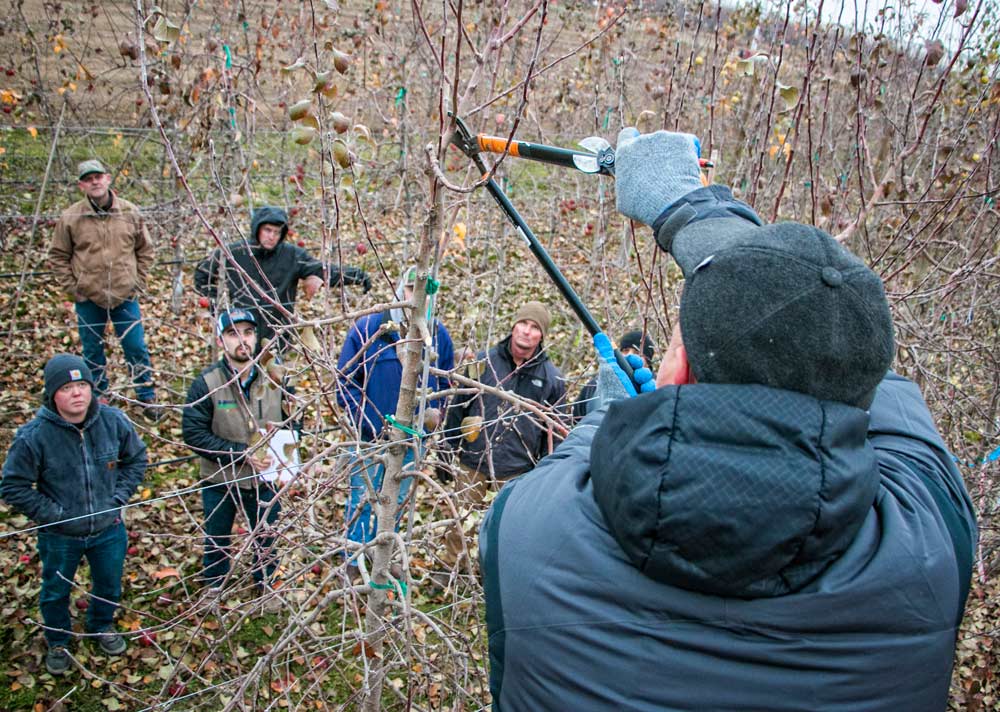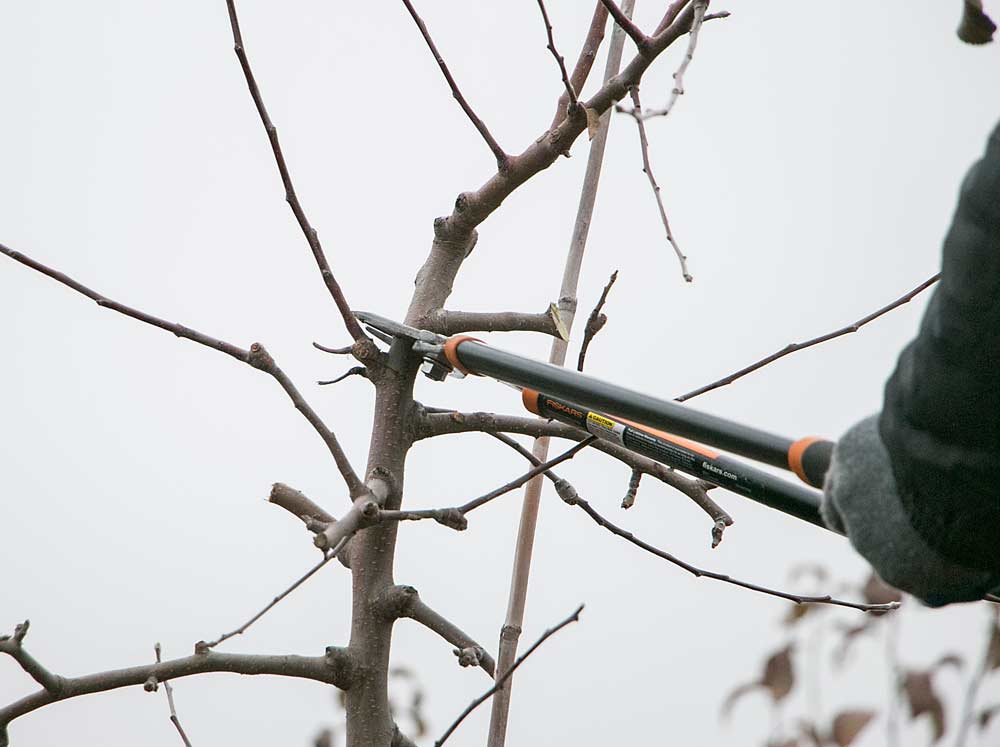
Horticulturist Stefano Musacchi teaches growers the art of pruning Cosmic Crisp trees at a demonstration in December, 2017, Washington State University Roza trial orchard. (Ross Courtney/Good Fruit Grower)
Push growth toward the trunk. Tip the end of 1-year-old branches and return the following year to tip again, leaving a few vegetative buds. Girdle or notch blind wood to encourage new shoots.
After several years now of preaching the Cosmic Crisp pruning gospel, the message is largely the same, and Washington State University plans to keep spreading it.
Now that orchardists have planted the first commercial blocks of WSU’s WA 38 apple, researchers and extension specialists are continuing their road show to teach growers how to train and manage the variety, marketed under the trade name Cosmic Crisp.
“We’re learning along with you,” Karen Lewis, WSU’s regional extension specialist, told a group of 20 or so growers huddled in the university’s Roza test blocks outside of Prosser.
The December outreach involved small groups, an hour at a time, watching Stefano Musacchi, horticulturist and endowed chair, explain the pruning, training and canopy management techniques to give Washington growers their best chance at success with the new apple, in which the industry has invested nearly $500 million.
Musacchi advises the click pruning technique, tipping year-old branches to reduce their apical dominance to prompt buds below the cut to swell. That should reduce blind wood and force the fruit closer to the center of the tree, where future mechanization will become easier.
Left on its own, WA 38 has a tendency to tip bear and produce stretches of blind wood, he said. It’s also a vigorous variety and should need little help filling its space in the first few years. He recommends not applying a lot of nitrogen, as long as an orchard has fertile soil.
“This tree will grow,” he told the orchardists. “Believe me. It’s not a Honeycrisp tree.”
The WA 38 also has a habit of “exhausting” branches, so Musacchi suggests cutting older branches back to within a couple inches of the trunk to encourage new growth on a three-year rotation.
Another trick is girdling and notching the trunk in the first or second year. If blind wood starts to develop, use a pair of clippers to gently score the bark and phloem right above a bud at green tip to encourage growth in that bud. Combine that with Promalin (6-benzyladenine and gibberellins) treatments.
However, be careful, he said. Cut too deep and you could snap the trunk. “You have to train your people to not get excited,” he said.
In fact, WA 38 has fragile branches in the winter, as Musacchi accidentally proved during his Prosser demonstration by breaking off a branch as he tried to pull it into place. He suggested waiting until the tree is green to do any tying.

Musacchi heads back a tree, reducing it’s height, and using a one-year-old shoot to make a lateral cut. (Ross Courtney/Good Fruit Grower)
Other tips included pruning more thinly on the inside of bi-axis trees to allow light penetration and setting aside time to prune in the summer to slow vigor.
Musacchi and Lewis plan to continue their demonstrations and field days in commercial WA 38 orchards and are working with WSU’s College of Agricultural, Human, and Natural Resource Sciences to produce instructional videos for each year of tree development up to the first year of cropping, Lewis said. •
—by Ross Courtney






Leave A Comment